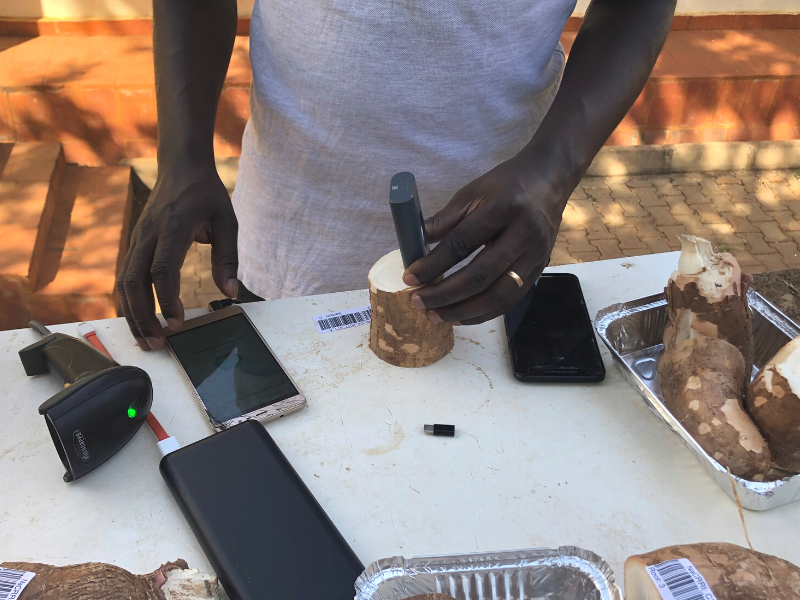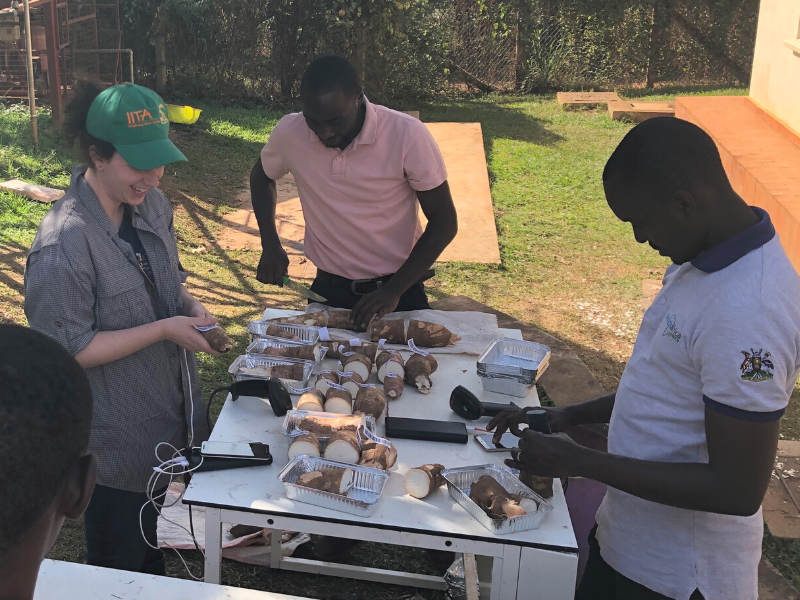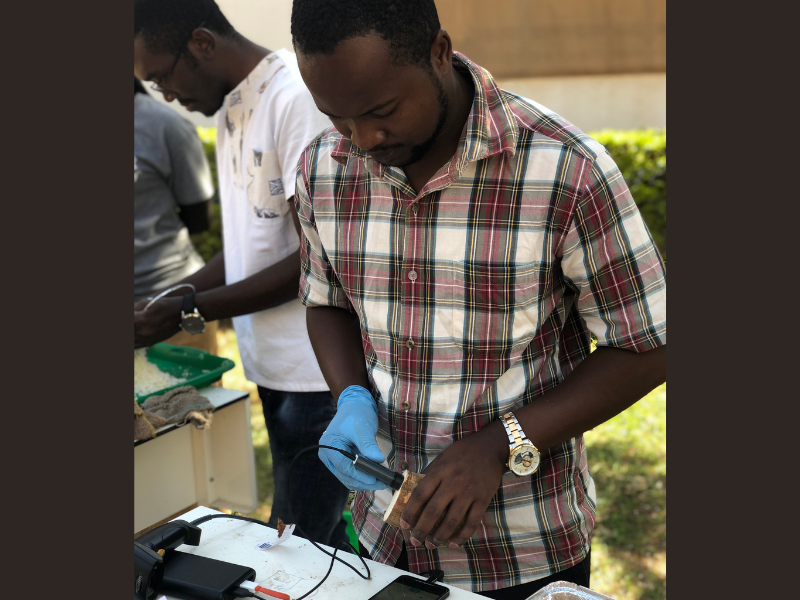Shedding light on more efficient ways to breed cassava
July 25, 2022 - Kaine Korzekwa
Crop breeders are always looking for ways to improve a crop. They know that even small differences in quality and quantity can mean big differences in profits for farmers. So, making the breeding process faster and cheaper makes it more likely they will have success.

A popular cash crop in Nigeria that breeders are working to improve is cassava. Similar to a sweet potato, it has tuberous roots. On the outside, it may look like a sweet potato, but most cassava is white inside. Cassava roots are high in carbohydrates. In Nigeria (and most of Africa), most cassava is grown for food, not for sale to industrial processors. Farmers in Southeast Asia and South America grow cassava mainly for industrial purposes.
Root quality is a major deciding factor for the success of new cassava varieties. Unfortunately, some root quality characteristics can be difficult and time-consuming to measure. When breeders are determining the quality of cassava roots, “dry matter content” is extremely important. This is the percent of the root that is not water. The problem is, measuring the root dry matter content is a difficult and time-consuming process.
Jenna Hershberger, a researcher at Clemson University, along with collaborators at IITA in Nigeria, tested a hand-held device called a spectrometer to see if it can accurately measure this key indicator of quality. They published their results in The Plant Phenome Journal, a publication of the Crop Science Society of America.
“Running a breeding program involves dealing with many tradeoffs,” says Hershberger. “Reducing the amount of labor involved in measuring quality traits might mean that more effort can be spent on other aspects of the breeding program. This may include increasing the number of plants that can be screened. Ultimately, this could mean delivering improved varieties to growers more efficiently.”

Root dry matter is traditionally measured by weighing root pieces before and after they are dried in an oven. Although this method is accurate, it is time-consuming and labor-intensive when processing roots from an entire field trial, she notes.
To make this process faster, the researchers explored the use of a low-cost handheld near-infrared spectrometer. In their study, they successfully developed and tested this new method for predicting root dry matter content. The new method will also reduce the number of samples that have to be dried in an oven.
Using a spectrometer could potentially save about a whole week’s worth of work for two to three people during a field trial, Hershberger says. In addition, the spectrometers connect to smartphones via Bluetooth to enable streamlined data collection.
A spectrometer works by emitting a pulse of light. The light hits the surface of the cassava root and is reflected back. The unique properties of the cassava impact the exact pattern of light that is reflected. Researchers can use math to build and use statistical models that learn the reflection patterns and what they mean. This helps them predict root dry matter content in cassava.
“We used statistical models to relate the patterns of spectral reflectance to the root dry matter content for 10 cassava field trials,” Hershberger explains. “For all our trials, we paired traditional trait measurements with spectra from our handheld spectrometer. We then trained and tested models using different subsets of this dataset. This helped us get an idea of how well the models were able to predict the dry matter content when provided only with spectra.”

Through their work they found that the environment the cassava grows in is important to account for in the model. The best models should be trained with samples from a wide variety of growing conditions and kept updated.
“This new method isn’t one and done,” Hershberger says. “A single scan with a spectrometer can be used to predict many different traits. However, a separate model must be trained for each trait and crop combination. Models must be tested for accuracy in each breeding program and should be routinely updated to ensure continued success.”
“I’m passionate about nutrition security,” she says. “I see plant breeding as one of the best ways to work towards it. Cassava is a staple crop for hundreds of millions of people, so if we can improve cassava, we can potentially have a huge impact.”
Read more about this work in The Plant Phenome Journal. Funding for this research was provided by the United States Agency for International Development, Bill and Melinda Gates Foundation, United States Department of Agriculture, National Science Foundation, and Cornell University.
